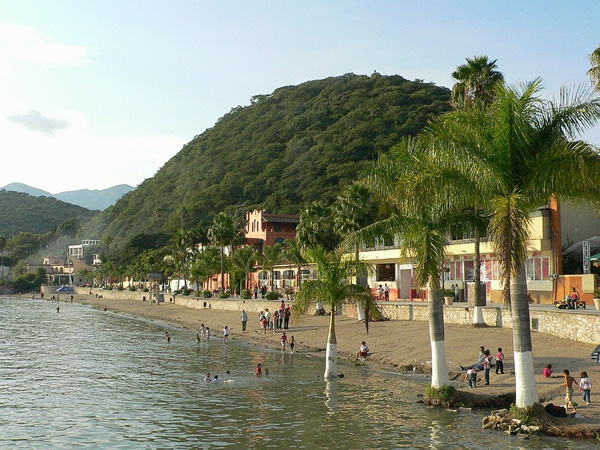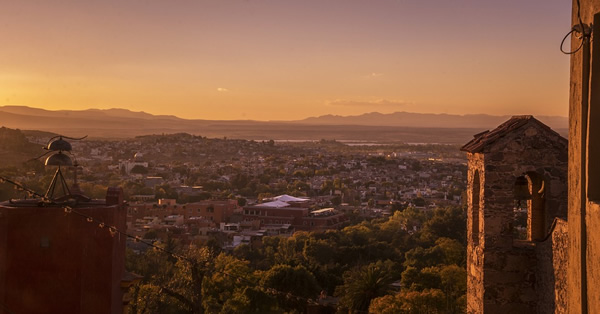Retirement in Latin America: An Overview
By Volker Poelzl
Resources updated 8/31/2023 by Transitions Abroad
 Many people decide to retire along peaceful Lake Chapala, Mexico.
Many people decide to retire along peaceful Lake Chapala, Mexico.
|
Retiring to an exotic location abroad with a pleasant climate and friendly locals is a dream for many soon-to-be retirees. But to make your plan happen requires plenty of commitment, research, tenacity, and patience. To help you search for suitable retirement destinations, we have compiled a list of attractive countries around the world that might be suitable for retirees from North America in terms of climate, quality of life, affordability, and safety. Not all listed countries are equally affordable, livable, or safe. Still, they all have unique qualifications that make them attractive. They all merit the attention of anyone interested in retiring overseas. We have selected several countries from each continent that seem desirable destinations for North Americans.
The first part of our series covers the Americas.
Our Primary Criteria for Retirement Locations Abroad
We have used visa considerations as primary criteria to narrow the number of destinations.
All countries on our list have visa provisions that allow foreigners and American citizens to settle in their country without special requirements such as business investment or family ties that would exclude the majority of interested retirees. We have also excluded countries that may be pleasant, affordable, and stable but have frigid and/or damp winters, which many retirees would rather avoid.
Please note: The exact number of American expatriates in a given country cannot always be precisely determined, so we often provide a range based on multiple reliable sources of information.
Mexico and Central America
Mexico
One of Mexico's most significant advantages for American retirees is its proximity. However, what was once a relatively safe and cheap retirement haven for expatriates is a country with a few pockets of a violent drug war that most retirees will never see. Much of the country is as safe or safer than most locations in the U.S., as expat author and publisher Tim Leffel points out in his essay on the commercial media's overstatement of the dangers in the greater part of Mexico relative to being at home.
Another advantage is that the country has made it easier for Americans to move to and live in Mexico,
which helps alleviate some of the traditional yet often changing red tape associated with such relocation. Mexico has a reputation as a warm destination for American expatriates and retirees, with a hospitable local population, a lively culture, excellent and inexpensive food, relatively cheap housing, and incredible health care savings.
The cost of living is relatively low (40-50% less) compared to the United States. Nearly one million U.S. retirees live in Mexico, and the government is seeking a target of five million retirees from the U.S. in the future.
See
the Living in Mexico section for more first-hand articles and resources.
 San Miguel, in Mexico, is also a ,very popular destination for retirees.
San Miguel, in Mexico, is also a ,very popular destination for retirees.
|
Costa Rica
The next closest Latin American retirement destination is Costa Rica. Estimates of 50,000 to 120,000 expats live in the country. Much smaller, safer, and more stable than Mexico, Costa Rica continues to attract expatriates and retirees from North America due to its warmth, beauty, and proximity to the U.S.
There has been an increase in the construction of retirement homes and retirement communities in recent years, and as a result, living and buying property in Costa Rica is a popular choice for Americans. Prices for homes often range from affordable to luxury, depending on the desirability of location, with coastal areas such as Tamarindo and Manuel Antonio in demand. For permanent residency, you must demonstrate an income of at least US$1000 monthly in addition to visa entry fees and other paperwork.
See
the Living in Costa Rica page for more first-hand articles and resources.
Panama
Panama has become an off-shore banking and retirement haven mainly for those who need to hide their wealth from the IRS. Fueled by international banks and their customers, Panama has experienced a great construction and development boom over the past decade. The country, especially Panama City, has undoubtedly become more modern and developed. However, the cost cost of living in Panama has also risen, though it is still cheaper than in the U.S.
But there is so much more to Panama than its financial allure. Approximately 20,000 to 30,000 expat Americans in Panama now enjoy the warmth of the climate and the beauty of nature outside Panama City.
See
the Living in Panama page for more first-hand articles and resources.
Guatemala
Suppose you are interested in retiring in Central America. In that case, you might wish to research other destinations not touted as the "best" retirement havens due to some social and political instability. Guatemala is very cheap and has many beautiful colonial towns and destinations suited for retirement. Although much less developed than Mexico, Costa Rica, or Panama, Guatemala (outside of more dangerous Guatemala City and some rural areas) offers a low cost of living, a good quality of life if you choose the right spots, and fascinating local cultural traditions with little American or outside influences. Political and economic destabilizations have recently been a factor to consider in a beautiful country with a warm climate and areas including the famous Lake Atitlan and the many, largely dormant, volcanoes.
To retire in Guatemala, you need to obtain a Guatemala Pensionado Visa and receive a monthly income of at least US$1,250 from outside the country, in addition to fees for the visa and application to enter the country. Estimates of between 6,000 and 7,000 foreigners live in Guatemala.
Belize
Belize is a largely quiet and laid-back destination, apart from Belize City. It has the advantage that it is English-speaking. At the same time, the local currency is pegged to the dollar, eliminating exchange rate variations. Belize also offers a retirement visa for foreigners.
The cost of living is approximately 30% less than in the U.S. The climate, cuisine, housing, and healthcare are all quite good.
To retire in Belize, you must receive a monthly income of at least $2,000 from your home country. In addition, there are fees for visas and applications to enter the country and other standard requirements (such as the background checks most countries require as part of the relocation process). About 9,000 American expats live in Belize.
South America
South America is a continent with a rich cultural and geographic diversity. To find the country that best suits you, it's worth doing some research. You should also make at least one lengthy visit, allowing enough time to get a feel for the land and people before moving. Each country has its distinct culture and lifestyle, often with many subcultures as part of its unique history. Argentina, Uruguay, and parts of Chile have a strong European cultural influence due to many immigrants from Europe. By contrast, Andean nations such as Ecuador, Bolivia, Colombia, and Peru have a predominantly indigenous population with a distinct culture and way of life that are quite different from Western civilization.
Conversely, Brazil is a modern fusion of indigenous, African, and European cultures. Brazil is a vast land that offers a lower cost of living than the U.S., and features a contemporary urban lifestyle in bustling cities. You can also live in a thatched hut in the Amazon, sleep in a hammock, visit spectacular beaches, or see the rightfully famous Iguazú Falls waterfall, which forms a border with Argentina.
Leaving these vital cultural factors out of your retirement consideration could spell disaster in your overseas retirement efforts. Ecuador's capital, Quito, may have a year-round pleasant climate. Nevertheless, if you like the current level of development and way of life in that country, you will be happy for a while but perhaps not permanently.
Sure, there are expatriate communities and retirement enclaves for North Americans in South America. Still, you can't and probably should not surround yourself with compatriots 24 hours a day or risk isolating yourself from the local culture. Living abroad inherently means engaging with local people, we firmly believe. To do so satisfactorily, you must ensure you like the people, culture, and climate of the country before moving.
Visiting each country in South America on your retirement list will prove very important.
Each South American country has its own unique immigration laws, and it's best to do some research to find out what works for you.
-
To live in Brazil, you must apply for a retirement visa and have at least US$2,000 in monthly retirement income.
See
the Living in Brazil page for more first-hand articles and resources.
-
As of 2023, Argentina offers a rentista (retirement visa), requiring proof of retirement or investment income from outside Argentina to access a temporary residence as a rentier. The minimum amount of outside income needed in Argentina is US$1800. The cost of living in Argentina is currently less than in neighboring Uruguay, Still, it is a vast and diverse country with a great culture, vibrant cities, and beautiful, quiet, small towns.
See
the Living in Argentina page for more first-hand articles and resources.
-
Ecuador has a similar retirement visa, which also requires income from outside the country of about US$1275 and an extra US$250 per dependent. For those aged 65 and above, you can enjoy tercera edad (elderly) benefits. The tremendous Andean landscape makes the country attractive with its mild, high-altitude climate, rich local culture, and easy access to some of South America's greatest pre-Columbian and colonial monuments. In addition to Ecuador's low cost of living, there is a rich local culture and easy access to some of South America's greatest pre-Columbian and colonial monuments. Ecuador uses the U.S. dollar as its official currency, which is always a great convenience and often an advantage for Americans.
See
the Living in Ecuador page for more first-hand articles and resources.
-
Buying property in Uruguay is open to foreigners. It makes you eligible for a temporary residency visa if you prove you have US$1500 a month in outside income.
More
on Common Requirements for Retirement in Latin America
Here are some of the most common documents you may need to apply for any residency visa:
-
A passport that is valid for at least one year from the planned day of entry
-
Birth certificate (usually a notarized copy)
-
Marriage certificate, if applicable (usually a notarized copy)
-
A clean police record from your country of residency
-
A notarized medical certificate to demonstrate your health and that you are free of contagious diseases
What you may need to do soon after you arrive in the chosen country
-
Register with the local police (and possibly have fingerprints taken)
-
Get a local I.D. card
-
Get a social security card for tax purposes and banking
General Considerations for Retirement in Latin America
Several other expat websites discuss these issues regarding retirement in detail by country, which you can check out on our expatriate websites page should you seek more specific information in your research. We also strongly urge that you take as long a trip as possible through countries you find attractive in Latin America before making any decisions about a retirement move, as you should also go by your "gut feeling," or the allure of a country, in addition to all the practicalities.
There is much more to moving to Latin America than finding the cheapest destination. Cultural considerations are equally important for most retirees since you will deal with the local people, way of life, and culture daily.
Volker Poelzl is a Living Abroad Contributing Editor for TransitionsAbroad.com. He has traveled in over forty countries worldwide and lived in ten for study, research, and work.
|
